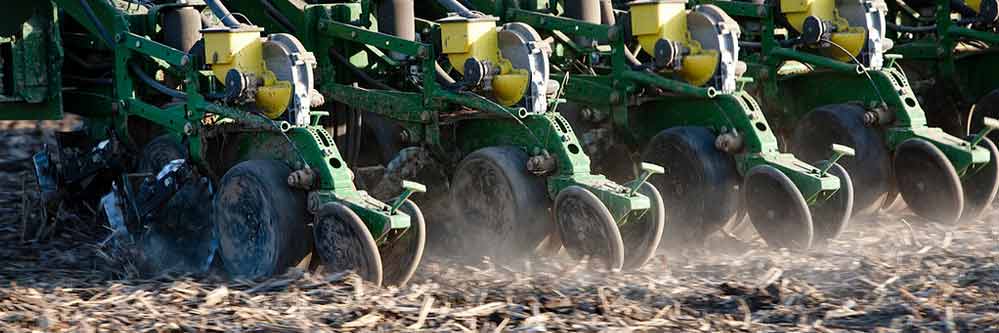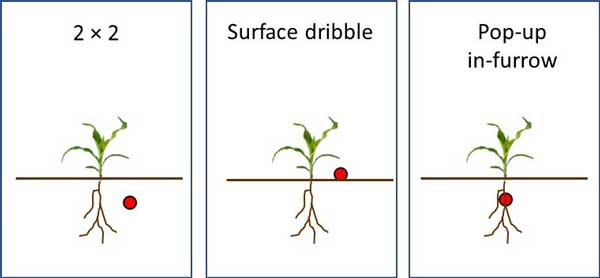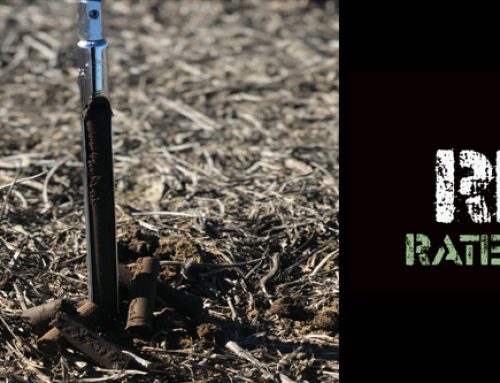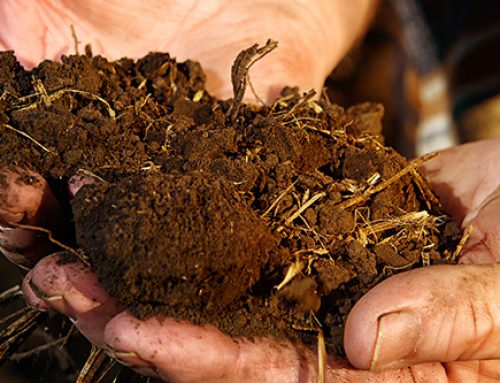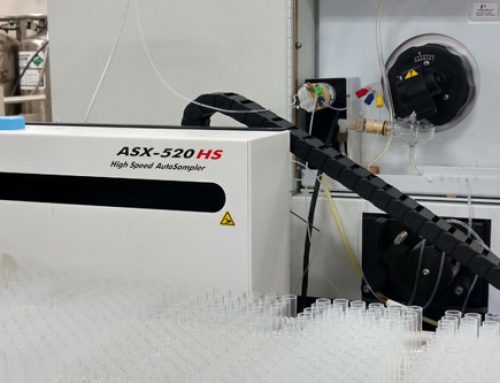Applying a pop-up or starter fertilizer at planting has become commonplace. Here are just a few things to keep in mind as you prepare your planter this spring.
By definition, pop-up refers to fertilizer put in direct contact with the seed, and a starter fertilizer is typically placed a couple inches away from the seed in a band. An alternative to this would be banding or dribbling fertilizer on top of the ground, which is less efficient than the other two methods.
The idea of a starter fertilizer is to give the plant a jump start during the early growth stages. This becomes more important in cool, wet soils where roots aren’t growing as fast. Even when soil nutrients are adequate, having a readily available source of nutrients close to the seed keeps the plants growing through these less than ideal growing conditions.
Typically, starter fertilizers contain both Nitrogen and Phosphorus. The need for Potassium, Zinc or other micronutrients is usually not warranted at this stage. These other nutrients should be dealt with by other means of application and timing. In certain calcareous and high pH soils, there could be a response to adding nutrients like Zinc to the starter blend.
Fertilizers are basically salts.
Phosphorus in general has a very low salt index, so the Phosphorus component is not a factor when determining the amount of salt applied with the seed. On the other hand, Nitrogen and Potassium have high salt indices. On pop-up fertilizers, the total amount of Nitrogen and Potassium that can come in direct contact with the seed is around 8 pounds per acre on a 30 inch row spacing. Once the fertilizer is moved away from the seed slice, more Nitrogen (N) and Potassium (K) can be applied.
When these fertilizers are placed at least two inches away from the seed, upwards of 60-80 pounds of actual N and K can be applied without salt injury. As an example, close to 75 gallons of 10-34-0 could be applied two inches from the seed, or over 20 gallons of 32-0-0 could be applied two inches from the seed. Whereas, seven gallons of 10-34-0 could be applied safely in furrow, or around two gallons of 32-0-0 could be applied safely in furrow. It is never safe to apply fertilizer in direct contact with soybean seeds.
The difference between starter fertilizer solutions and suspensions.
The traditional suspension phosphorus product 10-30-0, used to be quite popular, especially from a cost standpoint. But, suspensions are not nearly as user-friendly as solution fertilizers like 10-34-0. Suspensions require agitation, don’t necessarily mix well with other fertilizers or pesticides, and tend to settle and set up if kept in the tank overnight. The majority of starter fertilizers offered on the market today are solutions for obvious reasons.
Your Crop Quest Agronomist can help you determine the nutrients needed in your starter fertilizer program, and recommend the best source of fertilizer for your needs, as well as rates. Starter fertilizers are a great risk management tool to make sure your crop gets off to a good start this spring, which in turn will preserve a higher yield potential for your crop through the entire growing season.
Remember, a good fertility program starts with soil sampling and an understanding of what you have at the beginning stages of your cropping plans.
Written by: Dwight Koops, Dodge City, KS
Featured Image by: United Soybean Board, Planting
Graphic by: Dorivar Ruiz Diaz, K-State Research and Extension
